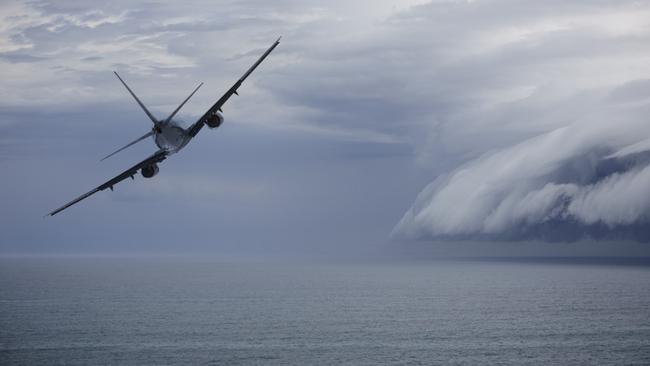The world’s most turbulent flight routes revealed
Strap yourself in folks, things are about to get bumpy.

Lifestyle
Don't miss out on the headlines from Lifestyle. Followed categories will be added to My News.
Although severe turbulence affects only one departure in 50,000, it is still a major fear for flyers.
There’s nothing like that feeling when aircraft drops, everything in it (including yourself if you’re not strapped in) seems to lurch towards the ceiling and a stranger beside you grasps your arm like a vice for reassurance.
Depending on what kind of flyer you are, wouldn’t it be great to know beforehand that your flight is due for a bit of the old up and down? Or, more comfortingly, being able to find out that nothing dramatic is forecast.

The website Turbli is the answer. Simply input your departure and arrival airport and whether you’re travelling today or tomorrow and it’ll kick out a result. The reason it operates in a 36 hour window is because it takes weather forecasts into account.
We gave it the homework of a flight between Sydney and Denpasar and once it had figured out our airline (which it needs to factor in what model aircraft is being used), it predicted “ bit of moderate turbulence” during the first six hours in the air “but smooth flight during the rest!” It also noted that large thunderstorms were on the way and the pilot might “consider an alternative route” while there were “similar headwinds as” with the flight “likely to arrive on time”. What magic is this right?

When Turbli crunched the numbers on the most turbulent flight routes of last year - we’re talking 10,000 routes connecting 550 of the world’s largest airports - with turbulence measured in something called eddy dissipation rate (edr) which Turbli founder Ignacio Gallego Marcos describes as the “measure of the turbulence intensity at a given spot”.
If you’re planning on flying in South America soon, we have bad news, the top four are all here - with Argentinian destinations most prevalent. Mendoza in Argentina to Santiago is the roughest even though it’s just 196 kilometres. Then it’s Cordoba in Argentina to Santiago, Mendoza to Salta in Argentina and Mendoza to San Carlos de Bariloche, also in Argentina. Only then does Asia make an appearance with the routes between Kathmandu and Lhasa plus Chengdu to Lhasa blustering their way in.

In our neck of the clouds, things are much quieter and you have to actually leave Australia to experience the most tempestuous flight in Oceania. That ‘honour’ goes to the Christchurch to Wellington hop, a distance of just 304 kilometres. Next up is Brisbane to Sydney but with an average turbulence edr of 14.178, it’s a long way behind the Mendoza Santiago’s 24.684. Rounding out the top five are Hobart to Melbourne, Melbourne to Sydney and Brisbane to Nadi.
Oceania routes with the highest average turbulence in 2024
- Christchurch to Wellington
- Brisbane to Sydney
- Hobart to Melbourne
- Melbourne to Sydney
- Brisbane to Nadi
Originally published as The world’s most turbulent flight routes revealed





